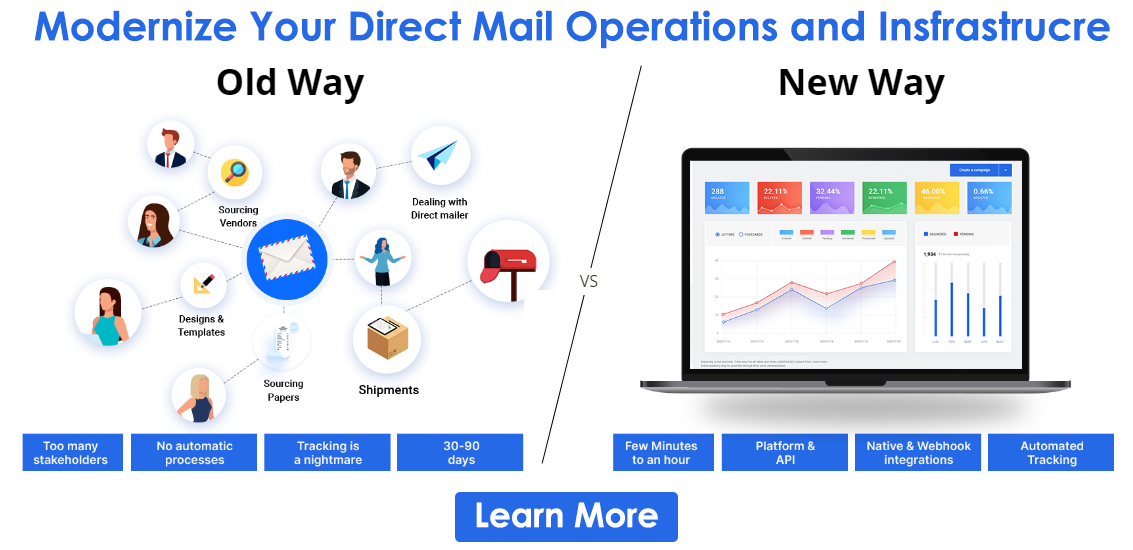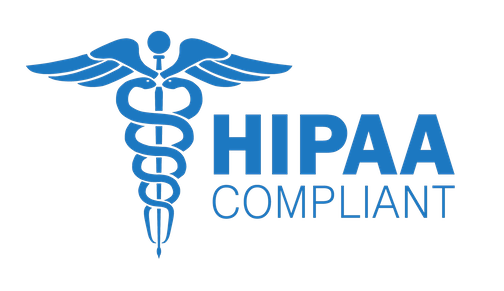
How Medical Collection Letter Help You Avoid Overdue Payments And Grow Patient Relationships
Healthcare is expensive, but also necessary for people. It is a bad combination that often leads to overdue payments. And if you work in the healthcare industry, you are all too familiar with it. There is no way of avoiding outstanding medical charges for a healthcare institution.

However, the proper medical collection letter can help you sort out your healthcare organization’s overdue payments. A sensitive collection letter can help you form better patient relationships and boost their loyalty.
But, for most healthcare organizations, sending a collection letter is a considerable effort that yields subpar results. This article will help you change that and help you create a compelling and empathetic collection letter for your patients.
What is A Medical Collection Letter?
As customers, all of us are well familiar with collection letters, and we have all received one at some point. A collection letter is a written notification that informs the recipient about their payment dues. A medical collection letter is any collection letter sent out by healthcare organizations like hospitals and clinics.
Like a regular collection letter, healthcare organizations can also include reminders and enquiries with the warning of legal action. Unlike consumer products and services, healthcare is an essential requirement and unavoidable for the patients.
The patient indeed owes you money, and you are fully entitled to ask for your due payment. However, that does not mean you can ignore civility and be less courteous in your medical collection letter. Hence, your letter must always remain polite and avoid using offensive and abusive words.
What Are The Information To Include In a Medical Collection Letter?
Writing a good collection letter for your healthcare organization requires you to provide all the necessary details to the patient. The details provided in the collection letter must effectively convey to the patient everything they need to make the payment.
Just remember that the purpose of the medical collection letter is to encourage the patient to make their due payments. And yet, many medical institutions make the mistake of not including all the details required by the patient.
Here are the details you must include in the collection letter for your healthcare organization.
Account Number
The first and foremost thing the patient needs to make their healthcare payment is the account number. Perhaps the patient didn’t make the payment until now because of their financial situation or other reasons. And the last thing you want to do is delay the payment further by not including the account number in the medical collection letter.
Balance Due
The next thing you need to include in the collection letter is the balance due for the patient. If the patient’s medical claim was successful, you need to subtract that amount from the total amount. In addition to that, you must expressly state that the balance due is after the insurance payment.
Account Status
Usually, the healthcare organization and the patient know that their medical payment is overdue. In some rare cases, the patient may still be unaware of their outstanding medical costs. Nonetheless, you still need to mention the account status in your medical collection letter.
Patient Responsibility
Although you should avoid any accusation in your collection letter to the patient, you still need to highlight the patient’s responsibility. Blaming the patient for delayed payments and pointing out their commitment are two different things.
Due Date
The due date is a must for every collection letter, and you must not exclude it from the letter under no circumstances. Furthermore, you must expressly state the consequences if the payment is not made within the due date.
Office Hours
The patient may need help or assistance from your healthcare organization regarding their medical payment. Always make it a point to provide your medical institution’s contact number and mention your working hours. It ensures that the patient can communicate with you without any delays.
Financial Relief
People don’t seek medical help unless they need to, and fraud is significantly low. Hence, if you are willing to provide any form of financial relief, the patient is likely to take your offer. So, it would be good to mention that you’re willing to provide financial relief in the letter to the patient requesting payment.
 Also Read: Non Profit Fundraising Letters
Also Read: Non Profit Fundraising LettersHow To Write a Letter To Patient Requesting Payment?
It is relatively easy to find a collection letter template for financial institutions online. These templates are good enough to give you a broad understanding of your medical collection letter.
However, a collection letter for your healthcare organization is not the same as collecting letters from a debt collector. Unlike the financial services industry or any other industry, the chance of fraud is relatively low in the healthcare industry.
No one wants to get hospitalized for fun and waste time and money. And if a patient fails to make their medical payments, it is most likely because they don’t have the financial means. Hence, you might want to consider taking a more delicate approach when writing a collection letter to a patient.
Find Out Why The Patient Has Not Paid Their Bill
Like marketing messages, you can ensure the best result for your communication efforts when you personalize them. Did you know that you can split patients who do not pay their medical bills into four different categories?
The four different groups you can categorize your patients into are as follows:
- Patients who are confused about the bill
- Patients who forgot or missed the bill
- Patients who can not afford to pay the total amount
- Patients who had no intention of paying the bill in the first place
You can create a medical collection letter template for each of these categories. It enables you to provide a more personalized message that is more relevant to the patient. You can use an advanced direct mail tool to personalize your mailers. However, most non-bill payment cases fall under the third category, where the patient can not afford the full payment.
Categorize Your Mailing List For Sending Mail Collection Letter
You can start categorizing your mailing list by going through your collections list. It might be a bit difficult at first, but you may group at least some genuine cases. Apart from this, you can ask experienced medical practitioners for insights.
The attending physician or nurse can also help you categorize the patients. And then, you can send them the medical collection letter that’s best suited for each category. It is worth noting that the first three groups of patients are treated differently from the last group.
You can use much sterner language in your letter to patients who are likely to commit fraud. In such cases, you need to ensure that your letter underlines the consequences of non-payment of medical bills.
Easy Personalization Through Automation
Drafting four different collection letters for your healthcare business can be challenging. However, you can use an automated direct mail automation system like PostGrid to simplify the process significantly. You can use different medical collection letter templates for the various categories of patients.
As a business organization, you must never underestimate the significance of personalization, even in collection letters. It can be a deciding factor which determines the success of your marketing and communication efforts. You can find more details about personalized mail here.
Furthermore, you can use specific mailing lists for each template, minimizing the scope of error. Best of all, PostGrid also offers an address verification tool that ensures the validity of your patient’s Address. Hence, you can ensure that the patient receives your collection letter.
Catch The Reader’s Attention At First Glance
Do you remember the last time you received a bill in your mailer? How long did it take to realize that the letter you received was a bill and not just another junk mail? Did you ever miss a bill payment because you accidentally threw away the mailer with the junk mail?
The point is that it is so easy for the patient to miss your medical collection letter. And it makes more sense to prioritize audiences who may have missed your collection letters. Why? Because they might have made the payment if they had received and read your letter.
The 3:33 Rule
The 3:33 rule is a unique technique for direct mail marketers. Yes, we know that collection letters are not marketing mailers. But, the method can work just as perfect for your medical collection letter as it can for marketing mailers. Because by the end of the day, you want your audience to read your mailer.
According to the 3:33 rule, your mailer envelope needs to stand out within three seconds of receiving the mail. Once it is opened, your mailer has thirty seconds to engage with the reader and 3 minutes to generate the desired response. Hence, the name 3:33 rule.
3 Seconds Before The Mailer Goes Into The Garbage
According to the 3:33 rule, you have 3 seconds after receiving the mail. In these three seconds, the letter recipient will decide whether to open it or throw it away. In other words, you have to ensure that the recipient knows the mailer is from your medical institution within three seconds.
The 3 second part is the most crucial aspect of sending your collection letter to the patient. Because once your patient realizes that the letter is from you, they are likely to read it. Whereas a marketing mailer is much more complicated, and getting a response is much more difficult.
Design The Look Of Your Mailer Before Writing It
In the case of a medical collection letter, one could easily argue that the design precedes the content. Here, you are not convincing your prospects to spend their money on a product or service. The patients owe you money, and they usually feel obligated to respond.
However, that does not mean getting a response is guaranteed or even easy for collection letters. But, we’ll discuss the content side of the collection letter a bit later. First, you need the mailer to notice the recipients before they open and view its content.
To ensure that the design of your collection letter to the patient is good enough as yourself, questions like:
- Is my healthcare brand easily identifiable by the recipient before opening the envelope?
- Does the collection letter look professional enough?
- Can I add any personal touches to the collection letter?
It would be best to consider all the factors we have listed above before you move on to create a collection letter for your patients. And no matter what the size of your mailer is, you must always include your logo and branding on it. Doing so is the most effective way to ensure that your patient understands that it is from you.
Be Mindful Of The Tone Of Your Medical Collection Letter
Above, we saw the significance of the design’s role in your medical collection letter. But, merely having a good design or even opening the letter is not enough. You also need to get a response from your patients.
As we have explained, the design of your letter is great to increase its open rate. And even though the patient owes you money, using the wrong tone in your mailer could delay the payments. It is, after all, a sensitive topic, and if you don’t use the right style, you may scare the patient or end up fuelling their ego.
So, you must always be mindful of the tone of voice in your medical collection letter. Communication through text can often be misleading and can cause unnecessary confusion. Hence, it would be best to make sure that the letter’s tone is calm and empathetic towards the patient.
Let the patient know that you are there to help them. The fact that you are willing to develop an amicable solution may be enough to push the patient to contact you.
Ask How You Can Help The Patient
It is not uncommon for patients to ignore your collection letters because they are sure they can’t make a full payment. So, when you offer to assist the patient with their medical expenses, the patient may feel relieved and reach out to you.
Offer Financial Assistance
Offering financial assistance shows that your healthcare organization has the patient’s best interest at heart. There is nothing better for a medical institution than being trusted by its patients in the long run. However, the patient’s help doesn’t have to be financial.
Add An Open-Ended Question
Sometimes, adding an open-ended question like “How can we help?” in your medical collection letter can generate a response. The patient may request more time or even help to mediate with their insurer.
Boost Patient Loyalty
In effect, asking how to help your patients in the medical collection letter help you build good patient relations. The better you are at sensitively handling a billing conversation, the better are your chances of building customer loyalty. A medical crisis can often be stressful for the patient, and empathy can go a long way.
 Also Read: Credit Dispute Letter Template
Also Read: Credit Dispute Letter TemplateSample Medical Office Letters To Patients
We have already explained how to write a collection letter to a patient. But, we know it is always easier for you to understand it with the help of medical collection letter templates. Here are a few examples of collection letters for your healthcare organization.
Sample Collection Letter To Patient #1
[Practice Name]
[Practice Address]
Billing Phone Number)
[DateDate]
[Patient Name]
[Patient Address]
[Account #]
[Balance Due:]
Dear [Patient Name],
We are writing you this letter to notify you that your account is overdue. We have sent multiple statements to you over the past few days, but we have not received any response. The balance due mentioned above is the sum after the payment made by your insurance company.
As per the hospital policy, you need to make the payment within 15 days of receiving this letter. We understand this may be a tough time for you, and we are more than willing to help you in any way possible.
If you need any further assistance or have any questions, you can contact us at [Phone Number] between 8 a.m. and 6 p.m. If you cannot make the full payment, we can discuss a payment plan to meet your needs. We hope to hear from you soon.
Sincerely,
[Patient Accounts Coordinator]
Sample Collection Letter To Patient #2
[Practice Name]
[Practice Address]
Billing Phone Number)
[DateDate]
[Patient Name]
[Patient Address]
[Account #]
[Balance Due:]
Dear [Patient Name],
We are writing you this letter as we are concerned about your overdue payment of [$___]. It is our sincerest hope that you will make this payment without involving a collections agency. As your healthcare provider, we understand that the times may be challenging, and we are happy to help you in any way we can.
It is not our wish to put you through the tedious collection process. Hence, we request you to get in touch with us to discuss your payment options. Please let us know if you need any help extending terms, finding financing, or something else.
We sincerely hope to help you and have made numerous attempts to contact you. But we need to hear from you to discuss a solution for the amount you owe.
If you need any further assistance or have any questions, you can contact us at [Phone Number] between 8 a.m. and 6 p.m.
Or you may also submit your payments to:
[Practice/Company]
[Address]
[Info For Credit Card Payments]
Sincerely,
[Patient Accounts Coordinator]
Conclusion
Healthcare can often be expensive, and it is common for people to miss out on their medical payments. Healthcare providers often use medical collection letters to reach out to their patients in case of overdue medical payments.
Categorizing your patients who have not made their medical payments and sending personalized collection letters can boost the response rate. Healthcare organizations can use advanced direct mail tools like PostGrid to send these personalized letters.
Automated direct mail solutions help send collection letters to your patients. It can be a crucial part of optimizing your hospital communication and offering better patient services.
Furthermore, PostGrid offers a secure direct mail solution with PIPEDA and SOC-II compliance. In addition to that, you can use PostGrid’s advanced address verification tool to ensure that your medical collection letter always reaches its destination.










